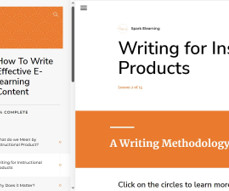The RETAIN Model for Creating Effective Courses
TalentLMS
MAY 5, 2015
Unfortunately, most trainers and faculty believe that the deployment of powerpoint and pdf notes on a learning management system equals the development of eLearning content. Crossing over from the Traditional One drawback of eLearning environment is its potential for “cognitive overload”. eLearning is more than that.
























Let's personalize your content